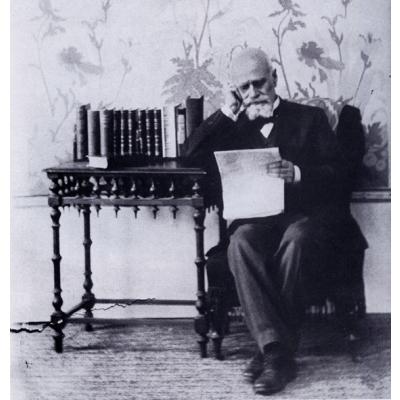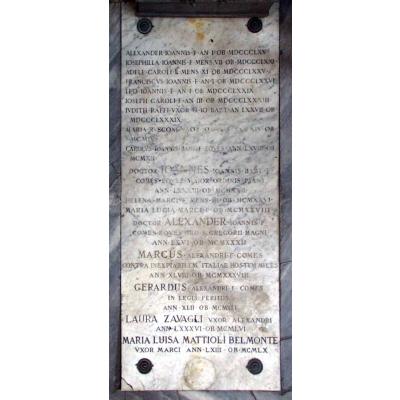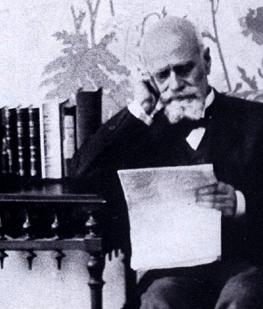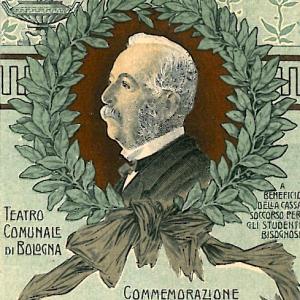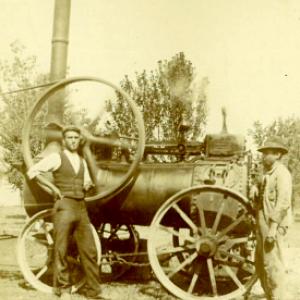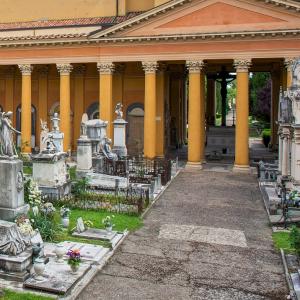Scheda
Bologna’s Giovanni Acquaderni (Bologna, 16 March 1839 - 16 February 1922) was one of the major figures of the Catholic movement in Italy during the second half of the 19th century. He spent his formative years in the Jesuit boarding school of Fano, and all of his subsequent actions were paved by the distinct educated he received: including the complete obedience to the Pope, an interest of the possibilities of modern technologies and scientific progress, a refusal to participate in politics, a solid and concrete faith that is deeply rooted in the personal work of ascetic and devotional practice, all of which while being oriented in the actions of the world.
His participation at the Conferences of San Vincenzo of Paul (San Vincenzo de Paoli) directed his interests in social issues. After he graduated in law, Acquaderni started his legal career, in the years that the Church seemed to lose, as well as its temporal power, but also its influence on society and its very reason of being. Acquaderni reacted as a pubblicist, successfully spreading popular writings in the defense of the Catholic faith but also religious images (the so-called oleographies). In 1867, together with younger friends, he founded the Italian Catholic Youth Society (Società della Gioventù Cattolica Italiana) in Bologna based on an ideal from Mario Fani. The motto was “Prayer, Action, Sacrifice” and the year after it was approved and blessed by Pius IX. The members of the society were held to have exemplary Christian lives, to the study of the religion, to exercise in acts of charity to the less fortunate, and a complete devotion to the Saint Sede. Unlike other societies, Acquaderni’s did not begin with a political affinity nor were they ‘against’ civil power, but they aimed to help others and to be a testimony to the Catholic faith in the particularly hostile time, certain that social and political structures would change. In 1869 Acquaderni proposed a collection of offerings for the Holy Father known as the Offering of San Pietro; it was opposed by the authorities, but not only was the venture a sucess but in its various models it still continues today. As a prominent exponent of instransigent Catholics, he participated in the founding the 'Opera dei Congressi' and in 1874 he was elected as the first president of the Standing Commitee of the Opera.
When, in the 1880s, the direction of the Opera changed to the Venetian group, Acquaderni turned to initiatives with more distinctive religious characteristics: from oganising pilgrimmages to Lourdes and to Loreto, to constructing Pius IX’s monumental tomb, the Vatican celebration (Esposizione) for Leone XIII’s jubilee, and finally to the colossal celebrations for the centenary of the birth of Jesus Christ (1900), in which Acquaderni proved his organisational talent moving truly in international dimensions: the building of the most crosses in Italy and all over the world, not only in churches but also on the peaks of mountains that still memorialise his immense work. On the other hand, to Acquaderni the religious work naturally connected to the social one. Thus, in 1896 he founded a regional bank, the Small Credit of Romagna (il Piccolo Credito Romagnolo) destined to open credit for the lower classes with particular attention to the “Catholic mutual aid societies and rural Catholic funds”. The same year he created the regional, daily Catholic “Avvenire”, destined to last until today as a national importance. He was also active in the cultural sphere because of his close friendship with Alfonso Rubbiani, a prominent figure in the Bologna art scene. The dissolution of the 'Opera dei Congressi' (1904) had no repercussions on his activity; he did not have an active role in the intransigent organisation for some time and, even though he had doubts, he joined in Pius X’s new course, especially in his relations with the Italian state. Thus, Acquaderni worked to assist soldiers during the Great War, in which he lost his dear nephew Carlo Acquaderni and, by this point, in his eighties, was awarded for his longtime militancy in the Catholic movement by joining the Popular Party of Don Luigi Sturzo. Acquaderni’s family rests in a family tomb located in the Certosa of Bologna, at the entrance of the Gallery of the Angels. Giovanni is buried in the crypt of the Cathedral of San Pietro, in the city center of Bologna. At the Castle of San Pietro Terme, on the facade of the house in which he was born, there is a memorial which reads: “In this house was the modest birth on 16 March 1839, the Count Knight Commander G. Battista Acquaderni, d. in Bologna on 16 February 1922, founder, with Mario Fani from Viterbo, of the Italian Society of Catholic Youths. The man who can be described through the words and examples of his Christian faith, actions, sacrifices, and for the young generation and fellow citizens, as a gesture of esteem and veneration P.P. 31 December 1922.”
Translation from italian language by Holly Bean.

